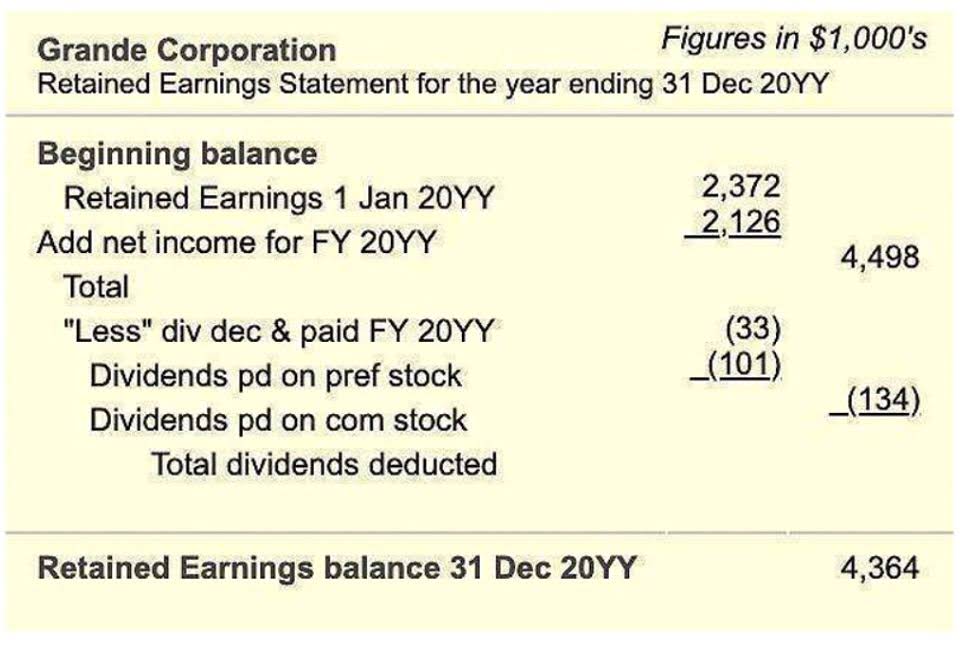3 4 Statement of Income and Comprehensive Income Intermediate Financial Accounting 1

Expenses from operations must be reported by their nature and, optionally, by function (IFRS). Other Comprehensive Income contains items like unrealized gains/losses on investments and ______ adjustments, which are acknowledged in equity until realized. Comprehensive income is generally defined as a change in a company’s net assets which can be accredited to the events which are not under the owners’ control.
What are some examples of OCI components?
NOTE – in the Wellbourn example presented above, on the statement of comprehensive income, the account is listed as Unrealized gain from FVOCI investment. Be mindful of the difference in account names as that can be confusing to students. The key attempt of comprehensive income is to evaluate the sum total of all financial and Medical Billing Process operating events which have changed the value of an owner’s interest in a business. It is evaluated on a per-share basis to incarcerate the effects of dilution and options. Moreover, it cancels out the equity transactions’ effects for which the owner would be uninterested, like share buy-backs, dividend payments, and share issues at market value.
Realistic Example of Comprehensive Income Calculation

This would statement of comprehensive income reduce complexity and gains and losses could only ever be recognised once. The original logic for OCI was that it kept income-relevant items that possessed low reliability from contaminating the earnings number (profit for the year). The OCI figure is crucial however it can distort common valuation techniques used by investors, such as the price/earnings ratio.
- Not all companies publish the Statement of Comprehensive Income; only those with large-scale businesses and unrealized income or loss typically do.
- Whenever CI is listed on the balance sheet, the statement of comprehensive income must be included in the general purpose financial statements to give external users details about how CI is computed.
- In the world of finance and accounting, comprehensive income is an essential metric that provides a complete picture of a company’s financial performance.
- Accurate calculation of comprehensive income ensures compliance with accounting standards and provides stakeholders with a complete view of a company’s financial performance.
- These are events that have occurred but haven’t been monetarily recorded in the accounting system because they haven’t been earned or incurred.
- Comprehensive Income includes all of Net Income plus OCI, offering a broader financial health view.
- This measure is essential for stakeholders who seek to understand the complete picture of a company’s value changes.
Understanding Comprehensive Income

Another challenge lies in the consistency and comparability of comprehensive income reports across different companies and industries. Variations in accounting practices and standards can lead to discrepancies, making it difficult for stakeholders to compare financial performance accurately. This inconsistency can undermine the reliability of comprehensive income as a tool for financial analysis and decision-making. After being adjusted for non-owner activities, the process moves the net income adjusting entries to the comprehensive income statement. The outcome provides the business with a final, all-inclusive amount that may be added to the balance sheet’s “accumulated other comprehensive income” line. Net income does not provide details about unrealized gains and losses from the company’s assets.
- Other comprehensive income is not listed with net income, instead, it appears listed in its own section, separate from the regular income statement and often presented immediately below it.
- In summary, for accounting purposes, assets may be considered as held for sale when there is a formal plan to dispose of the segment.
- We hope to provide a well-rounded, multi-faceted look at the past, present, the future of EdTech in the US and internationally.
- It is similar to retained earnings, which is impacted by net income, except it includes those items that are excluded from net income.
What does Comprehensive Income include that Net Income does not?
- We strongly recommend reviewing this lesson, as its content may be essential for understanding subsequent parts of the curriculum.
- On the financial statements, AOCI appears as its own line item under the Shareholder’s Equity section.
- Using this data, professionals in the company can make better decisions and create more accurate plans for the future.
- Comprehensive income excludes owner-caused changes in equity, such as the sale of stock or purchase of Treasury shares.
Look for other statements to get an inner view of the firm, go through their last ten years of statements, and try to see a trend coming forward. It will help you understand the risk-return ratio even before investing in the organization. For stress-free accounting and expert guidance on financial reporting, consider partnering with a certified CPA firm. Our team of experienced professionals can help you navigate the complexities of comprehensive income and ensure that your financial statements are accurate, compliant, and decision-useful.
What is a Statement of Comprehensive Income?
- These items represent adjustments that will affect the company’s financial position in the future.
- Investors and business management can see a more complete and accurate picture of income thanks to the comprehensive income statement.
- They include a statement of comprehensive income, an income statement, and tax statements.
- This helps reduce the volatility of net income as the value of unrealized gains/losses moves up and down.
- However, when the assets are sold, it becomes realised income, and the company incurs taxes.
- Income statements frequently show this number following net income and it is useful for predicting future performance for accountants and other finance professionals.
Stakeholders, including investors, creditors, and analysts, can make more informed decisions based on a complete picture of a company’s financial performance. Net Income is the profit or loss of a company after all revenues and expenses have been accounted for, excluding items classified as other comprehensive income. Another example can be seen in the financial sector, where banks often hold significant amounts of financial instruments that are subject to market volatility.

Discontinued operations are presented separately on the statement of income or comprehensive income and also on the statement of cash flows. All companies are required to report each of the categories above net of their tax effects. This makes analyses of operating results within the company itself and of its competitors more comparable and meaningful.

